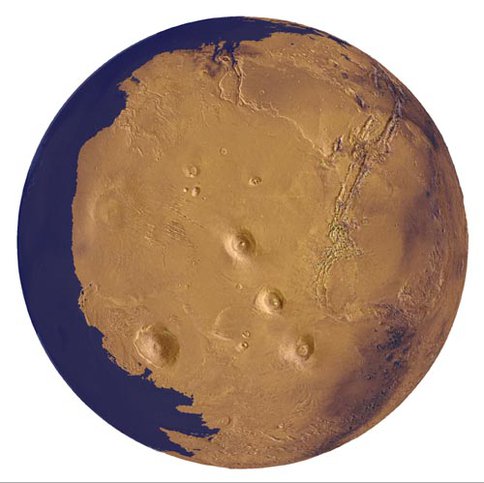2007 Annual Science Report
 University of California, Berkeley
Reporting | JUL 2006 – JUN 2007
University of California, Berkeley
Reporting | JUL 2006 – JUN 2007
Early Oceans on Mars
Project Summary
Project Progress
The idea that standing bodies of water might once have existed on Mars’ surface is supported by several lines of evidence, including geologic and topographic features near the margins of the northern lowlands that have been interpreted as shorelines formed by ancient oceans. But topographic profiles along the shorelines do not follow surfaces of equal gravitational potential, as the margins of a standing body of water should. We thus testing the hypothesis that these long-wavelength topographic trends are the result of large-scale deformation of Mars’ surface. Our analysis indicates that the deformation mechanism might have been true polar wander, a change in the orientation of Mars’ rotation axis in response to a large redistribution of mass (Perron et al., 2007). As a first step in this analysis we reconsidered in the previous reporting period the rotational stability of planets with lithospheres including the effects of non-axisymmetric surface loads (Matsuyama et al., 2006). We are furthering this analysis with a more general treatment of the rotational stability of planets; we have found that Mars is not at present unstable (as concluded in previous studies) and that non-hydrostatic theory is an inaccurate framework for analyzing the rotational stability of planets (like Mars) that have an elastic lithosphere.
These findings support the idea that there were once extensive bodies of water on Mars that persisted over a geologically significant time interval. An interesting implication of the study is that, due to the change in Mars’ rotation axis, the ancient oceans would have been centered in the tropics rather than the north polar region (as previous studies have suggested). The source of mass redistribution that caused polar wander remains uncertain. One possibility is that the oceans themselves caused the pole to move, a subject we are currently exploring.
-
PROJECT INVESTIGATORS:
-
PROJECT MEMBERS:
Jerry Mitorvica
Collaborator
Mark Richards
Collaborator
Isamu Matsuyama
Postdoc
Amy Daradich
Doctoral Student
Taylor Perron
Doctoral Student
-
RELATED OBJECTIVES:
Objective 1.1
Models of formation and evolution of habitable planets
